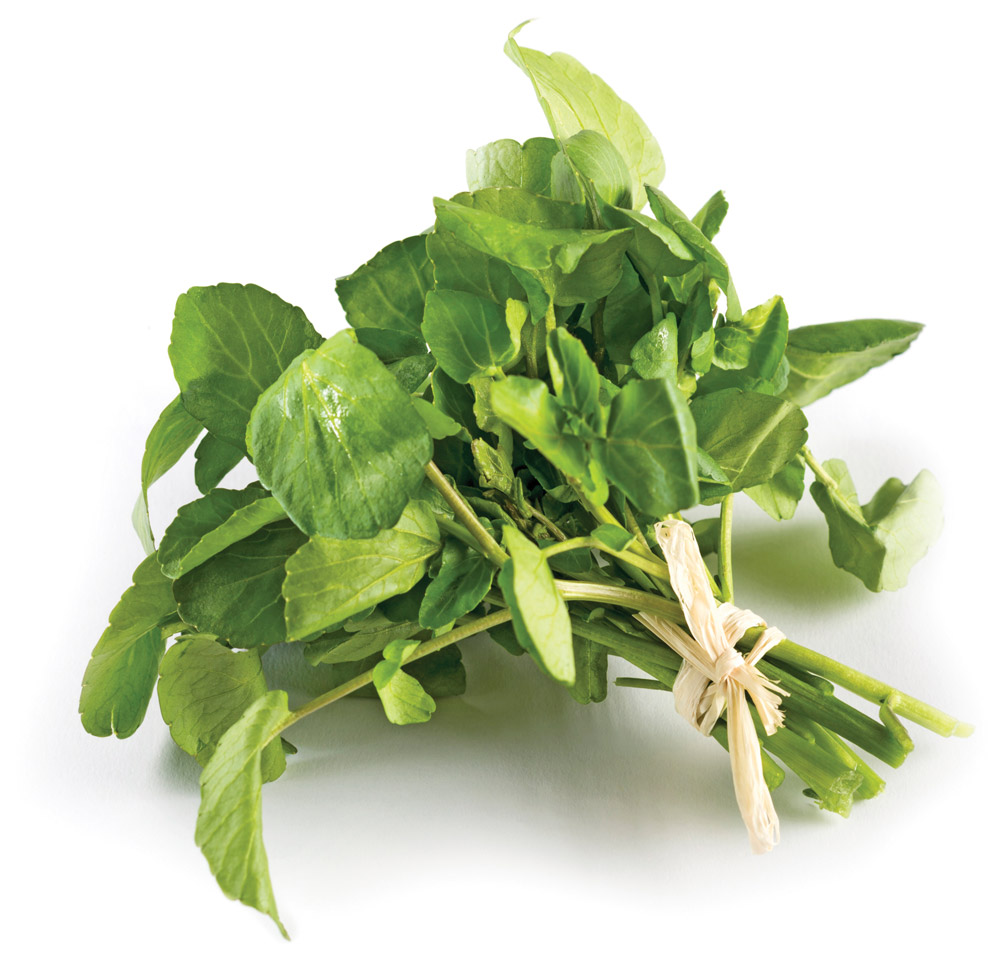The Widespread Watercress is Also Useful and Tasty
Name: Watercress
(Nasturtium officinale)
Watercress is a member of the Mustard family. There are five species of Nasturtium worldwide.
Description
Watercress is a weak-stemmed annual that is always found along streams or slow-moving waters. Each leaf is pinnately divided, a typical Mustard family configuration. The stems are hollow, and the roots are white on the underwater part of the plant.
The flowers are white and, as with all members of the Mustard family, consist of four petals, four sepals, one pistil and six stamens (four tall and two short). Yes, you might need a magnifying glass to see this!
Areas Found
Found worldwide, watercress is restricted to the edges of lakes and streams, and springs. It can be found in the lowest elevations, along the streams that enter oceans and it can be found in the higher elevations. It can be found in every state of the Union.
When to Harvest/Availability
In the winter and spring, rising waters can wash the watercress away. The plants then begin to sprout up again in late spring and through the summer, which are the best times to gather.
According to author Euell Gibbons, watercress is one of the very few wild edible plants that he was able to find every month of the year, even when there was snow on the ground.

Uses
FOOD: The entire watercress plant, except the roots, is used in raw and cooked dishes. The younger leaves are good in salads, since they are not as spicy as the older plants. The plant is rinsed, diced, and added to all varieties of soups and stews, to which the watercress lends a spicy hotness.
Once the plant has flowered, it also develops bitterness and is then best after being cooked.
To make a wilderness cooking spice, the watercress plant can be dried and powdered and then used alone or with salt.
Watercress greens can also be fermented, a lá kimchi.
PROCESSING: When you collect watercress, you don’t need to uproot the entire plant. Just gather a handful, and cut above the roots. The stems are tender and can be collected easily this way.
Then, when you’re ready to eat, first examine all that you’ve collected and remove any debris. Rinse, and chop fine for salads, coarse for soups.
Fresh watercress will keep a week or longer in the refrigerator and several days in a cooler. It can also be kept in a vase of water in your kitchen for up to a few days before you eat it.
If you plan to dry the plant as a seasoning, remove any foreign debris, rinse and place it whole in your dehydrator.
MEDICINE/NUTRITION: Watercress is a source of considerable vitamins and minerals, according to the USDA. One hundred grams of watercress (approximately two servings) contains 120 mg of calcium, 60 mg of phosphorus, 330 mg of potassium, 43 mg of vitamin C, and 3,191 I.U. of vitamin A.
OTHER USES: Watercress is a food, however, the dried plant can also serve as a spice for bland foods, such as MREs.
Advice For Growing
Some farmers grow watercress hydroponically. Some have tried to grow it in sand, where there is a fairly regular flow of water.
If you cannot duplicate the conditions in nature, you will probably be frustrated trying to grow watercress, and you should probably stick to cultivating one of the other terrestrial Mustard family members, which are easy to cultivate.

Cautions
Older watercress greens will become very spicy and even bitter and are best cooked. Also, if you are not certain about the purity of the water in which you collected watercress, you should cook the plant before eating it.

Recipes
SATURDAY NIGHT SPECIAL
Sauté half an onion in a skillet with butter. Add at least one cup of chopped watercress greens – leaves and stems. Cook gently until it’s all tender. Add a dash of soy sauce or liquid amino acid, and serve.
TONGVA MEMORIES (Soup)
- 3 cups milk (you can substitute almond milk)
- 1 cup finely minced watercress
- Paprika
- ½ tsp. kelp powder
Heat, but do not boil, the milk. Add the minced watercress, and let it steep for five minutes, covered. Ladle into bowls and sprinkle with the spices when it is served.

About ASG’s Plant Advisor
Christopher Nyerges has been teaching ethnobotany since 1974. He is the author of “Guide to Wild Foods and Useful Plants” and other books on the uses of wild plants.
Nyerges has contributed many articles to American Survival Guide on a wide range of topics. He can be reached at SchoolofSelf-Reliance.com.
Editor’s note: A version of this article first appeared in the December, 2019 print issue of American Survival Guide.


